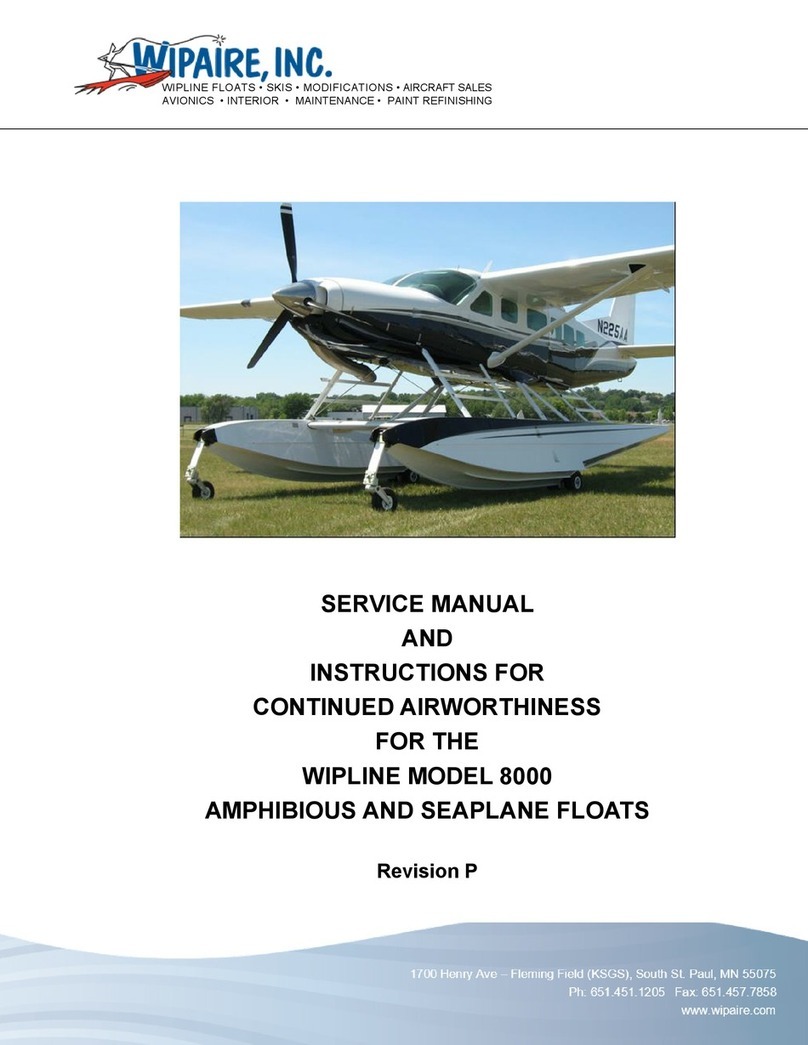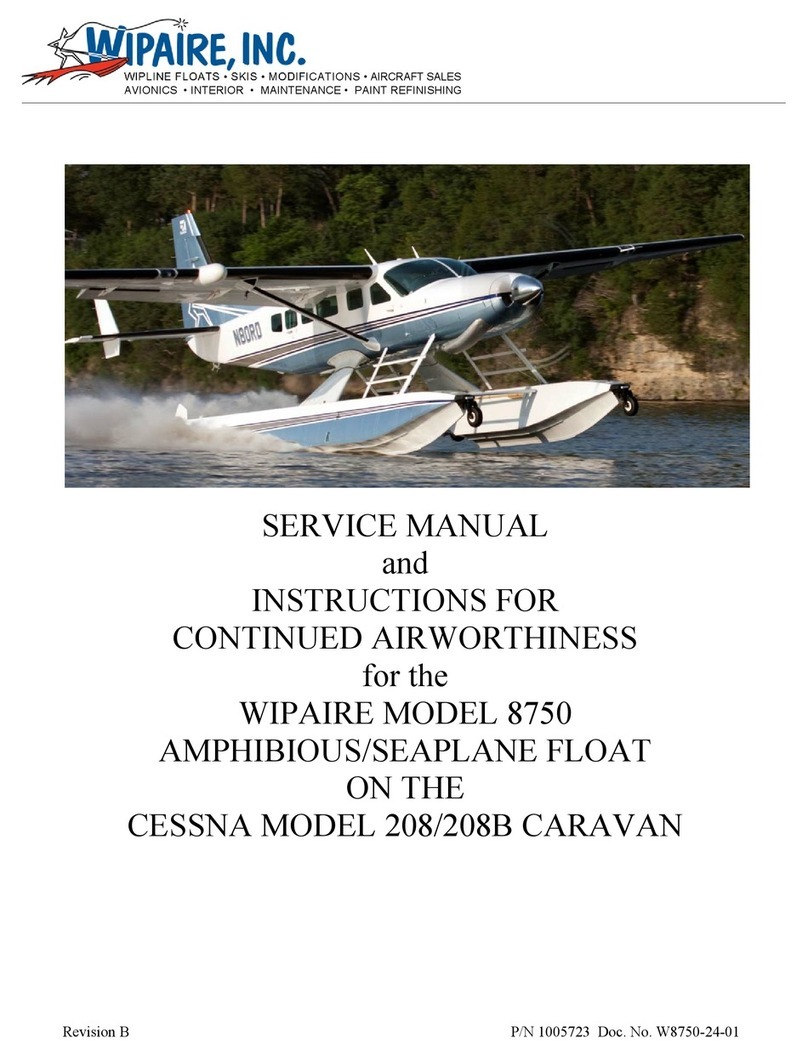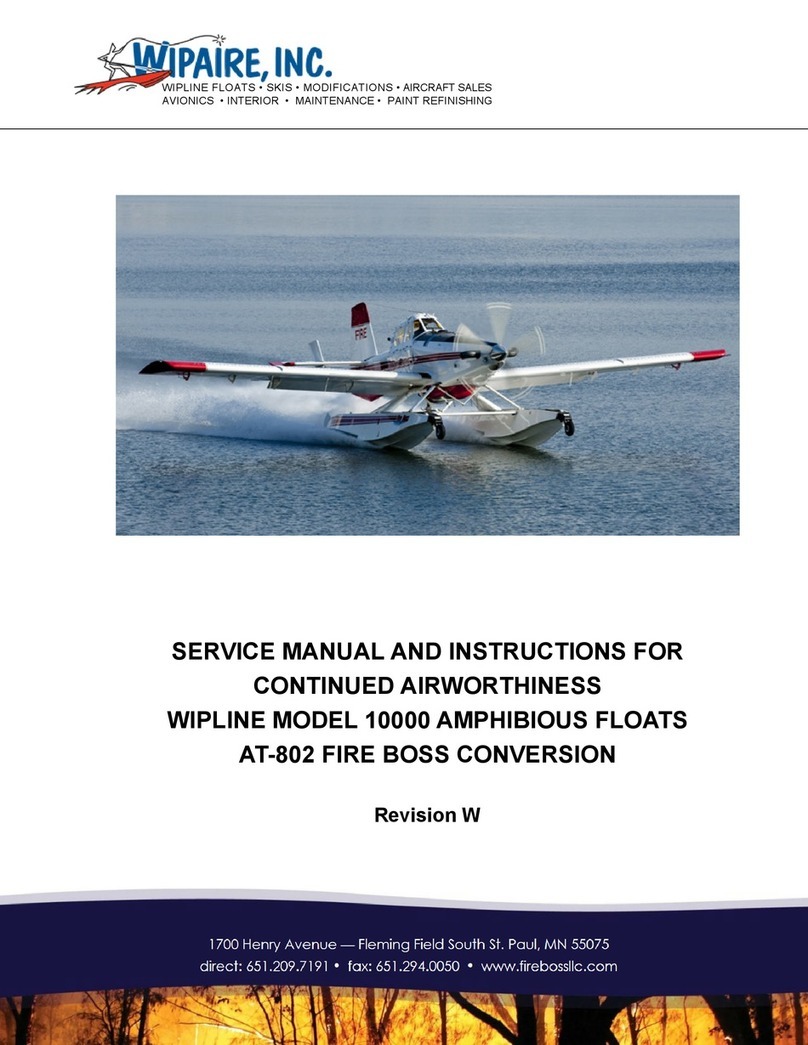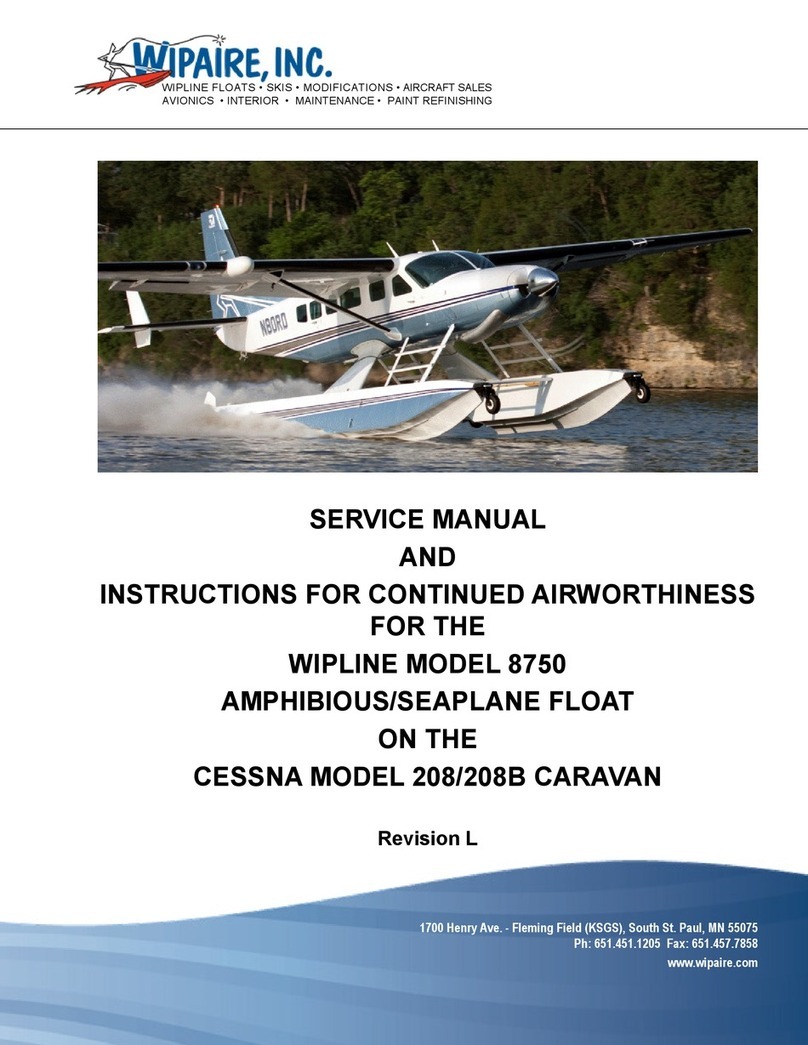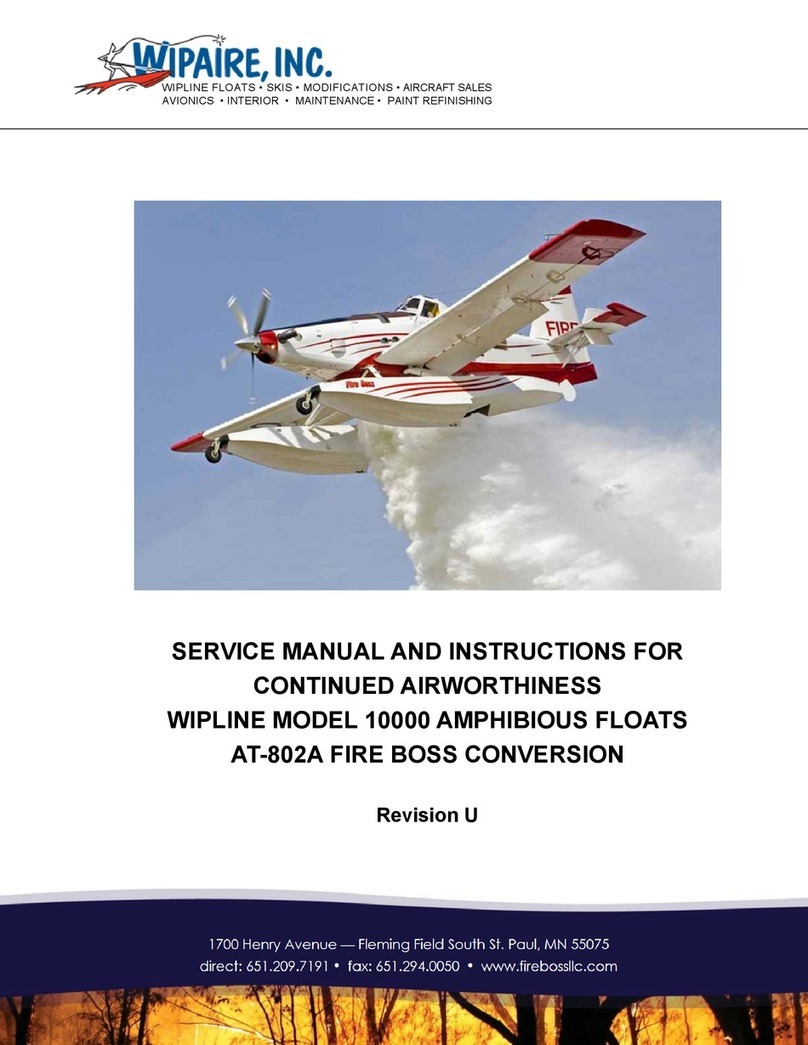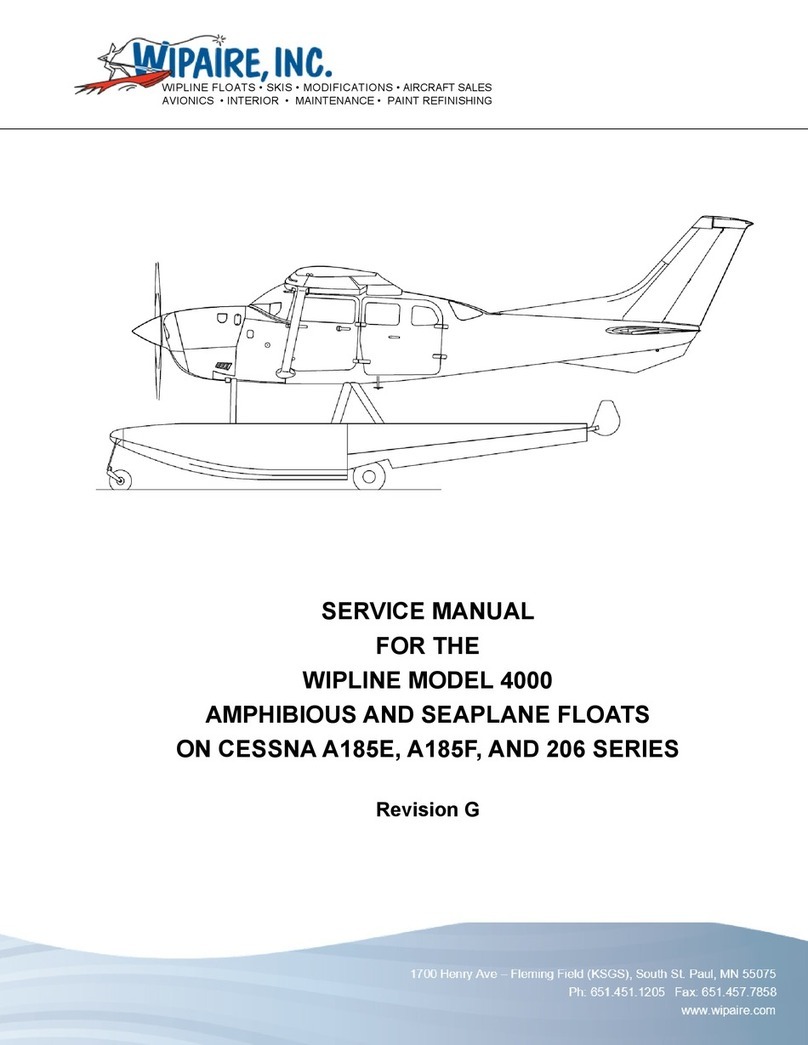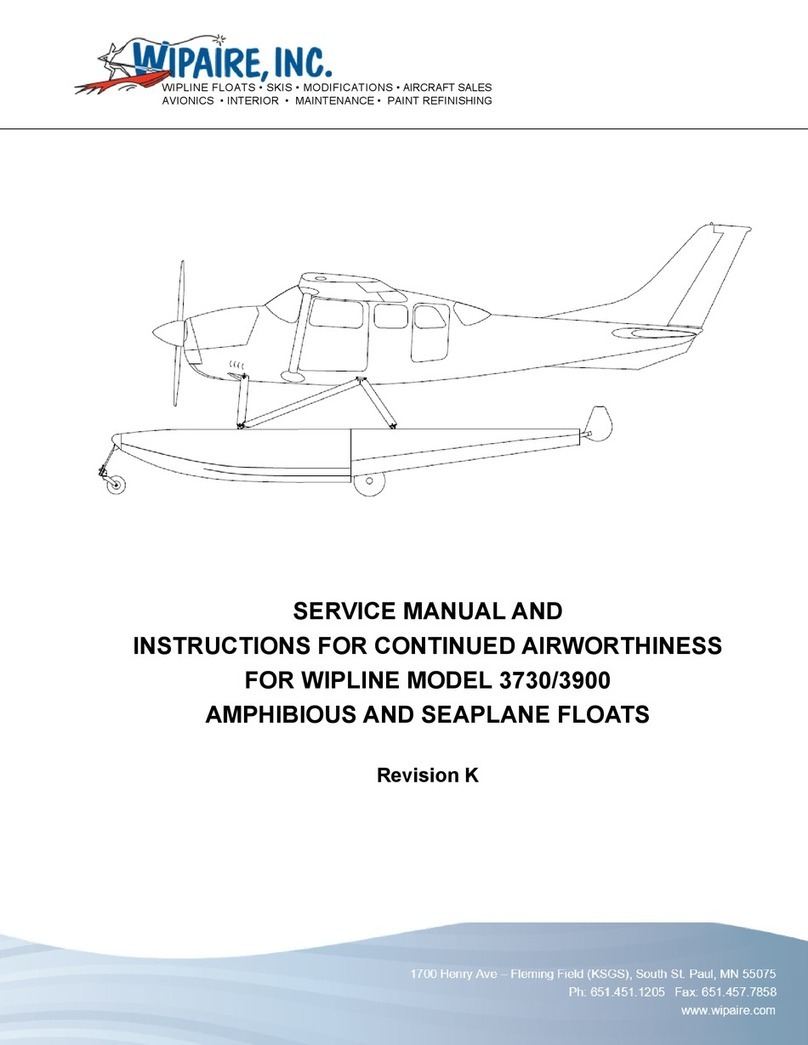
SERVICE MANUAL & ICA
WIPLINE 13000 FLOATS
P/N 1002548 Revision H Page 7
INTRODUCTION
This manual is provided for the owners of Wipaire model 13000 Floats as installed on the DHC-6 Twin Otter.
It has two main priorities, to inform owners of the level and amount of servicing required to properly maintain
their oatplane, and to provide technical data and servicing specics to maintenance professionals charged with
servicing the oats.
When performing standard repairs for Wipline Aluminum Floats, please refer to the “Structural Repair Manual For
Wipline Aluminum Floats” part number 1008274. It is available free of charge online at www.wipaire.com.
The service products referred to throughout this manual are described by their trade names and may be
purchased from the Wipaire Parts Department. We, at Wipaire, thank you for your purchase and look forward to
years of satisfying exchanges with you. Your oats are built with pride and attention to detail, but we want that
care to extend beyond your purchase.
Our customer service department, WipCaire, is available for your questions 24 hours a day, 7 days a week,
wherever you are in the world.
Wipaire, Inc.
1700 Henry Avenue – Fleming Field
South St. Paul, MN 55075
Telephone: (651) 306-0459
Fax: (651) 306-0666
Website: www.wipaire.com
In this service manual we have worked hard to include many repair scenarios in addition to the recommended
products, practices, and routine maintenance required to keep your oats in working order.
When a oat part is signicantly changed or an additional inspection recommended or required, often a service
letter and/or kit is issued. If a warranty is issued, most commonly it is for an 18 month time period, so it is crucial
to check for service letters specic to your oat model at each periodic inspection to be eligible.
Service Manuals and the installation prints included are also revised periodically and also need to be kept
updated. Service letters, service kits and Service manuals are available on our website www.wipaire.com at no
charge.
CHECKING FOR THESE UPDATES SHOULD BE A PART OF ROUTINE MAINTENANCE
